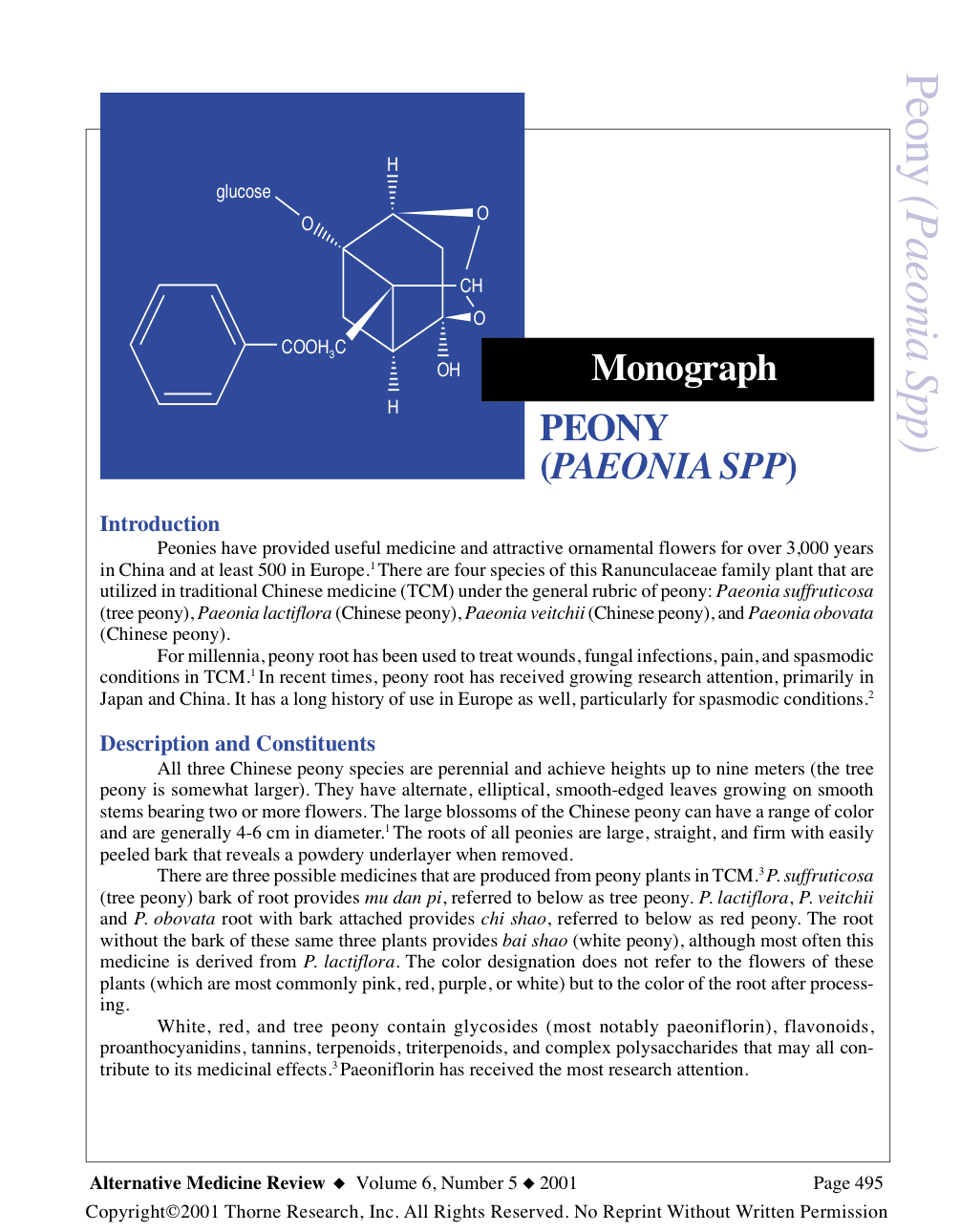Abstract
Peonies have provided useful medicine and attractive ornamental flowers for over 3,000 years in China and at least 500 in Europe.1 There are four species of this Ranunculaceae family plant that are utilized in traditional Chinese medicine (TCM) under the general rubric of peony: Paeonia suffruticosa (tree peony), Paeonia lactiflora (Chinese peony), Paeonia veitchii (Chinese peony), and Paeonia obovata (Chinese peony). For millennia, peony root has been used to treat wounds, fungal infections, pain, and spasmodic conditions in TCM.1 In recent times, peony root has received growing research attention, primarily in Japan and China. It has a long history of use in Europe as well, particularly for spasmodic conditions.2

